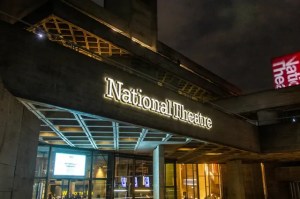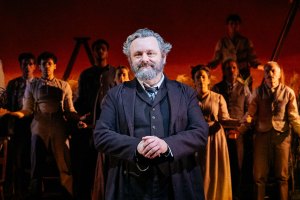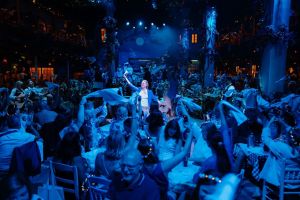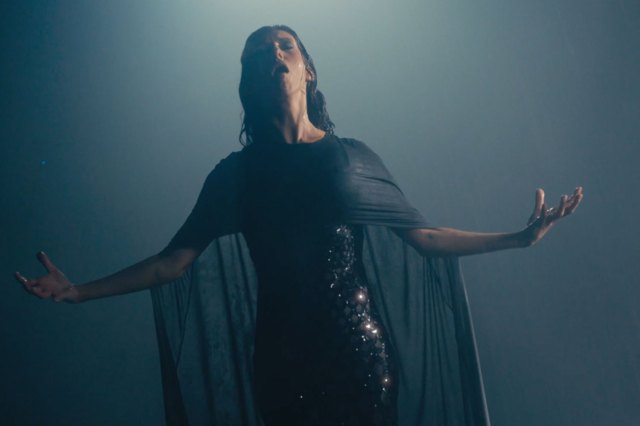Damian Cruden On … Waterloo Station’s Role in The Railway Children
York Theatre Royal artistic director Damian Cruden conceived and directed the epic site-specific staging of The Railway Children, which has recently taken over the former Eurostar terminal at Waterloo Station, where it’s already extended its limited season into early 2011.
Previously staged twice at the National Railway Museum in Yorkshire, the production incorporates the station itself into the story, with the track transformed into a traverse stage, and it also “guest stars” a period steam train, the Stirling Single from the Railway Museum, and the Old Gentleman’s saloon carriage from the 1970 film version.
Adapted from E Nesbit’s 1906 children’s book, The Railway Children tells the story of Roberta, Peter and Phyllis, three children whose lives change dramatically when their father is mysteriously taken away. They move from London to a cottage in rural Yorkshire with their mother where they befriend the local railway porter and embark on a magical journey of discovery, friendship and adventure.
“I’ve always had an interest in how large pieces of engineering can engage with theatre. There’s a challenge when the human scale is sat next to the large mechanical scale. In The Railway Children, there’s the exterior world of the steam engine, and how that revolutionised people’s way of living in the last century, and the interior world of the individuals involved in the story – so you have a really interesting relationship between what people have made and how that affects their lives.
“In this instance, for the children, the railway is a force of good because ultimately it brings their father back to them. Setting the piece in the context of the railway environment – first at the National Railway Museum in Yorkshire and now in the Eurostar terminal at Waterloo – means that, when the audience arrive at the narrative, they have already started to engage in the notion of transportation, of being transported.
“Entering the station at Waterloo and making their way through the undercroft of the old building and platform areas as millions did when entering Europe over the 13 years Eurostar was open here, collecting your ticket in the ticket hall, having your ticket checked … this all gives the sense of embarkation, of setting off, of departing which is, of course, what happens in the play. Inside that journey is also not just the notion of transportation but also of transformation. In terms of The Railway Children, so many of the characters and their relationships are transformed, and in particular there’s the transformation of the central figure in it, the eldest child Roberta, from child into young woman.
The station is a place where you meet, where transit begins, where a journey both starts and finishes, so it seems to be a very important place in which to say something, much like a theatre. As a company that has toured often and therefore works in different spaces from night to night and has to adapt accordingly, I’ve always been very conscious of the effect a space has on a piece of art. It changes it and hopefully enhances it depending on how you use it.
“We wanted to bring the show to London, but didn’t know where it might work. The initial idea of the Eurostar terminal came from Sarah Quintrell (Roberta in the play), who lives in London. In our ignorance, we thought it would be quite straightforward – it wasn’t! It was a whole group of expert individuals and organisations who came together and made sense of something really complicated, not least switching on and reinvigorating the station again. It’s a fantastic space to perform in. I hope there’s a future for it beyond our production.”
Following runs in Yorkshire, The Railway Children opened on 12 July 2010 (previews from 4 July) at Waterloo Station, where it’s currently booking through to 2 January 2010.












